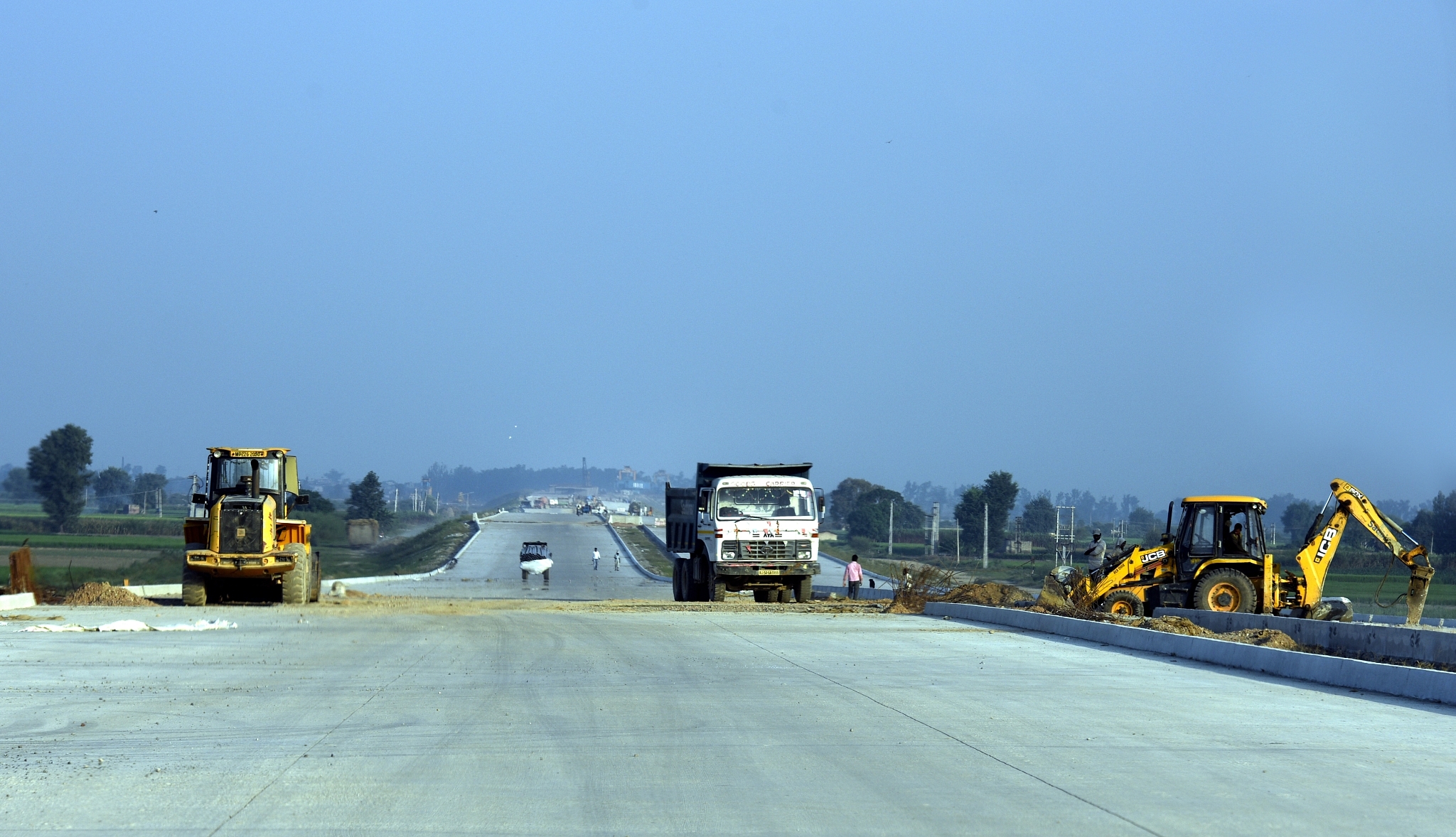Infrastructure
Delhi’s Eastern Peripheral Expressway Will Be Thrown Open In March, Three Months Ahead Of Time
- Work on the Eastern Peripheral Expressway, which will help ease traffic in Delhi, is set to open in March.
- This is good news even for areas beyond Delhi as the expressway is expected to spur economic growth in the region.

The Eastern Peripheral Expressway under construction (Sonu Mehta/Hindustan Times via Getty Images)
The much-awaited Eastern Peripheral Expressway (EPE) or National Expressway 2 (NE 2), connecting Kundli to Palwal in Haryana, is set to open sometime this month. This is three months ahead of the deadline imposed by the Supreme Court of India.
The 135km-long six-lane, access-controlled expressway is set to decongest the National Capital Region (NCR) by providing a high-speed corridor to bypass Delhi and connect those coming in from Uttar Pradesh. Work began in early 2016 with 60 per cent of it being completed, as reported, in 14 months.
The Rs 7,558 crore project is being constructed under the engineering-procurement-construction (EPC) model with five firms – Sadbhav Engineering, Jaiprakash Associates, Ashoka Buildcon, Gayatri Projects, and Oriental Structural Engineers – being awarded various sections of the corridor.
The expressway was originally planned to be built under the build-operate-transfer (BOT) model, but it did not receive any bids. The National Highways Authority of India (NHAI) then had to go for the EPC model, where 167 requests for quotation were received.
It will start near Sonepat along National Highway 44 (NH 44, formerly NH 1) and terminate near Palwal along National Highway 19 (NH 19, formerly NH 2), where it will meet the Kundli-Manesar-Palwal Western Peripheral Expressway (WPE), which completes the beltway around the national capital. The section of the WPE from Manesar to Palwal was thrown open in 2016 with the remaining section set to open this month.
Once completed, the road will provide seamless connectivity beyond Delhi. The capital, being one of the four nodes on the Golden Quadrilateral, is where the Mumbai-Delhi and Kolkata-Delhi highways meet. It is also a junction on the North-South Corridor connecting Srinagar to Kanyakumari. The two expressways will allow traffic on all sides to continue towards their destinations with less congestion.
In April 2017, Union Minister for Road Transport and Highways Nitin Gadkari made news when he said he would pour tea into a cup while travelling on the expressway at a speed of 150kmph to check the smoothness of the road.
Delhi is currently plagued by severe traffic congestion due to a rapid rise in the number of vehicles on the road. The increased congestion adds heavily to the already polluted air. A 2015 survey by Ola Cabs put the average speed of a vehicle in Delhi to be 23kmph.
However, the main beneficiaries of the beltway would be the cities and towns outside of Delhi, in Haryana and Uttar Pradesh. The presence of the expressway is expected to act as a catalyst to economic growth in the region as well.
This will be the second major access-controlled ring road in India after Hyderabad’s 158km-long Outer Ring Road.
Support Swarajya's 50 Ground Reports Project & Sponsor A Story
Every general election Swarajya does a 50 ground reports project.
Aimed only at serious readers and those who appreciate the nuances of political undercurrents, the project provides a sense of India's electoral landscape. As you know, these reports are produced after considerable investment of travel, time and effort on the ground.
This time too we've kicked off the project in style and have covered over 30 constituencies already. If you're someone who appreciates such work and have enjoyed our coverage please consider sponsoring a ground report for just Rs 2999 to Rs 19,999 - it goes a long way in helping us produce more quality reportage.
You can also back this project by becoming a subscriber for as little as Rs 999 - so do click on this links and choose a plan that suits you and back us.
Click below to contribute.
Latest